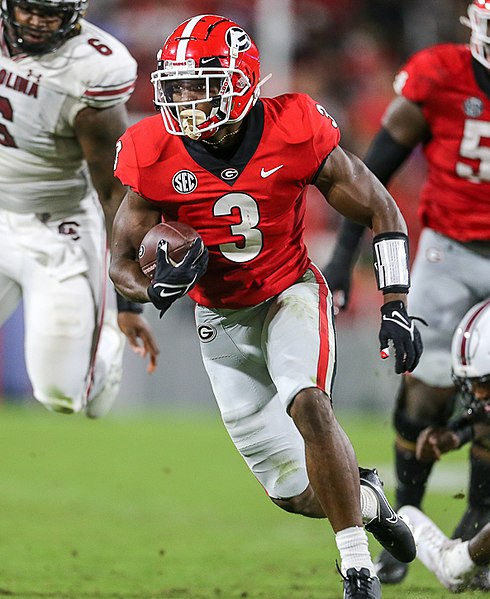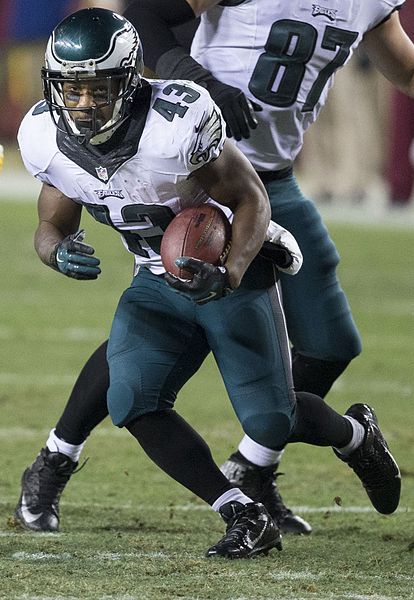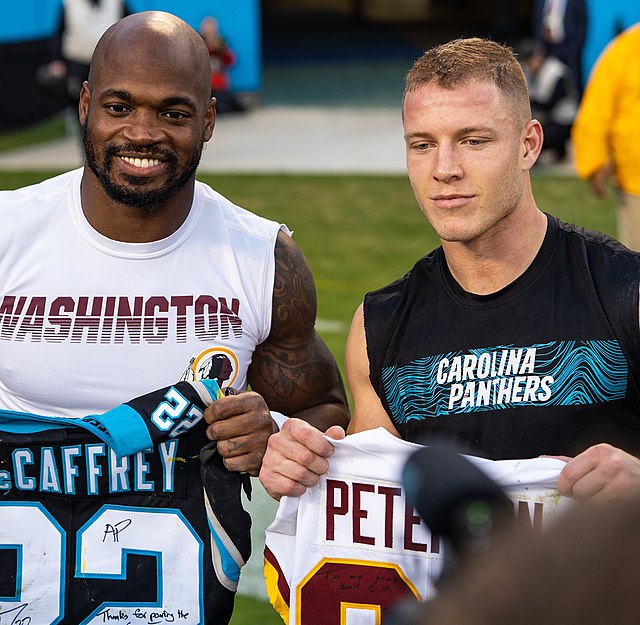Barry Sanders is an American former football running back who played for the Detroit Lions of the National Football League (NFL) for 10 seasons. Sanders led the league in rushing yards four times and in rushing touchdowns once, establishing himself as one of the most elusive runners in the history of the NFL with his quickness and agility, despite being only 5 ft 8 in tall and weighing 203 lbs. Sanders played college football for the Oklahoma State Cowboys. As a junior in 1988, he compiled what is widely considered the greatest individual season by a running back in college football history, rushing for 2,628 yards and 37 touchdowns in 11 games. He won the Heisman Trophy and was unanimously recognized as an All-American.
Sanders in January 2019
With the Detroit Lions from 1989 to 1998, Sanders played home games at Pontiac Silverdome.
Sanders' head bust on display at the Pro Football Hall of Fame in Canton, Ohio
A running back (RB) is a member of the offensive backfield in gridiron football. The primary roles of a running back are to receive handoffs from the quarterback to rush the ball, to line up as a receiver to catch the ball, and block. There are usually one or two running backs on the field for a given play, depending on the offensive formation. A running back may be a halfback, a wingback or a fullback. A running back will sometimes be called a "feature back" if he is the team's key player/more prominent running back.
Zamir White, a running back then playing at the collegiate level for the Georgia Bulldogs during a game versus the South Carolina Gamecocks.
A running back turns up the field in an attempt to reach the end zone.
Darren Sproles, a "scat back"
Adrian Peterson and Christian McCaffrey representing an old school and modern running backs styles respectively.







